- Home
- Military & Defense
- 50 years ago, US troops bunkered down for the Vietnam War's most infamous siege - here's how the Battle of Khe Sanh unfolded
50 years ago, US troops bunkered down for the Vietnam War's most infamous siege - here's how the Battle of Khe Sanh unfolded
Khe Sanh was just 8-10 miles from Laos, an extremely important part of the Ho Chi Minh trail, which made the Khe Sanh Combat Base an important outpost because it could disrupt the flow of NVA weapons, troops, and supplies into South Vietnam.

The Khe Sanh Combat Base, seen here in the lower left, was just one of a number of US Military bases.
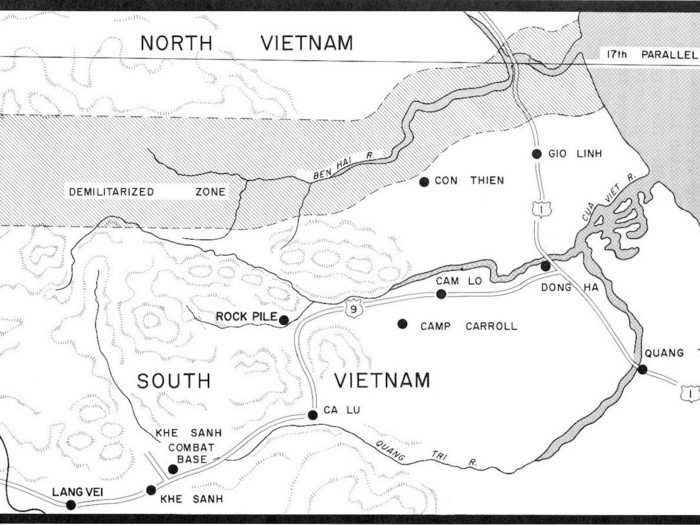
The other bases, Rock Pile, Camp Carroll, and Ca Lu were manned by American and ARVN personnel. They became essential as their artillery helped fend off NVA attacks.
The NVA battle plan called for the encirclement of the Khe Sanh Combat Base with artillery, cutting off of Route 9 to prevent American supplies and reinforcements, and mass infantry attacks on the base from all directions. NVA tanks were also to be used- something that was rare at this point in the war.
The artillery attacks continued for 77 days straight. The bombardment was so intense that the base's main ammunition dump exploded.
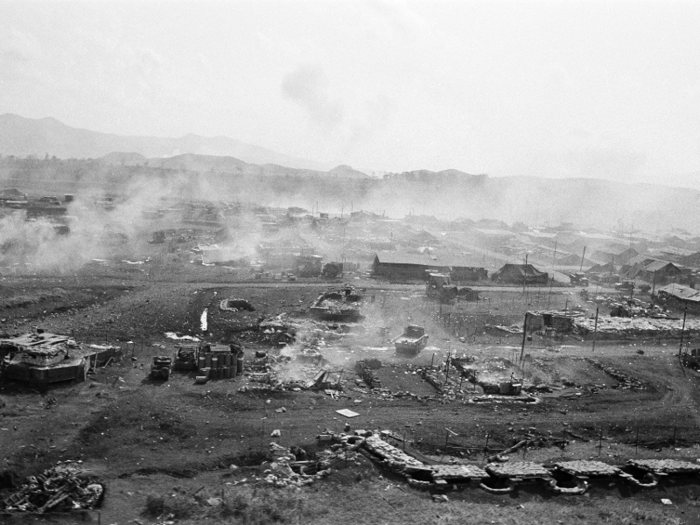
"There was wreckage thrown everywhere," 1st LT/ Paul Elkan later said. "Vehicles were smashed, windshields shattered, blown tires- tents were shredded, pieces of gear, and torn sandbags were everywhere. What had been a combat base looked like rubble."
US Marines responded with artillery of their own.
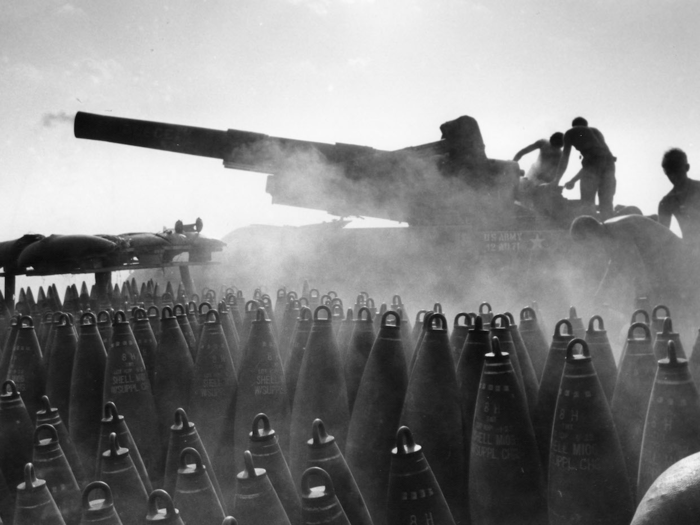
The 20 artillery pieces and numerous mortars at the Khe Sanh Combat Base were aided by 175mm guns artillery from the bases at Rock Pile (12 miles northeast) and Camp Carroll (17 miles east).
The handful of tanks at the base were placed in ditches and used as artillery pieces.
"The Marines were told to button up," General William Westmoreland said. Constant artillery barrages and rain storms meant that the Marines had to repeatedly repair and remake their defenses.
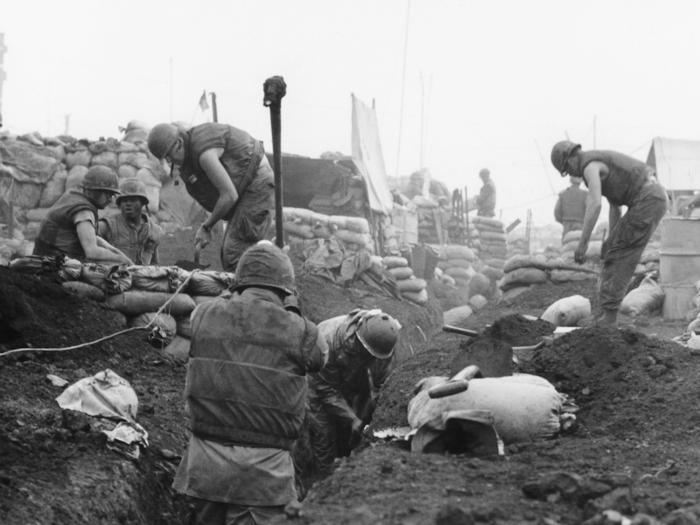
Eventually, Khe Sanh has deep trenches that connected all the major building and fighting positions.
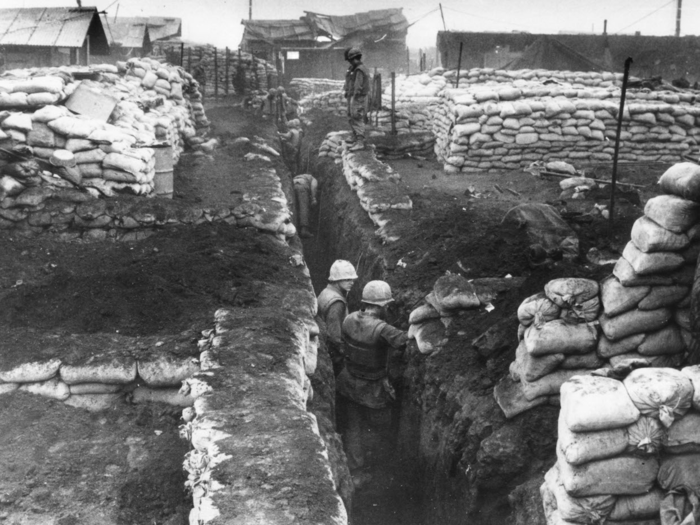
The Marines and Naval Construction Battalions were able to dig deep trenches and bunkers throughout the Khe Sanh Combat Base. Important complexes like ammo dumps and hospitals were dug well underground in order to avoid being destroyed.
The airfield was an absolutely vital lifeline for the soldiers at Khe Sanh.
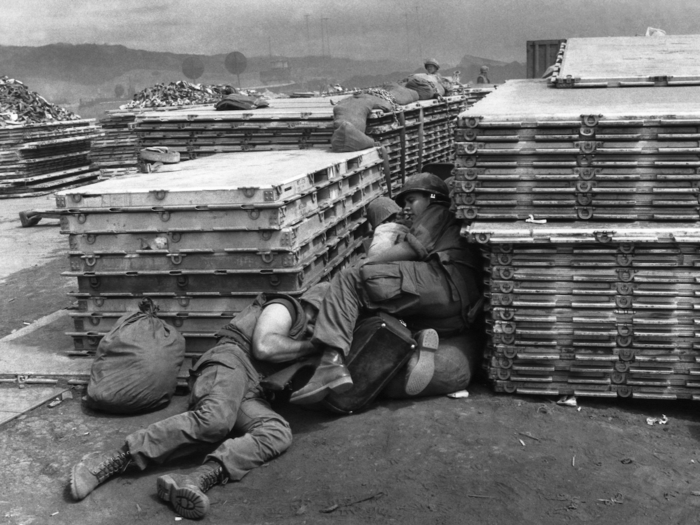
Just like the defenses, the airfield had to be repaired and maintained as well. Almost as soon as the battle started, it became impossible to resupply the base over land, leaving air delivery the only option.
The airfield was not designed to hold jets, but C-130 and C-123 transport planes could land on its surface, as could helicopters.
If any attack was to succeed, the NVA would need to take these hills, as they were the crucial high ground.
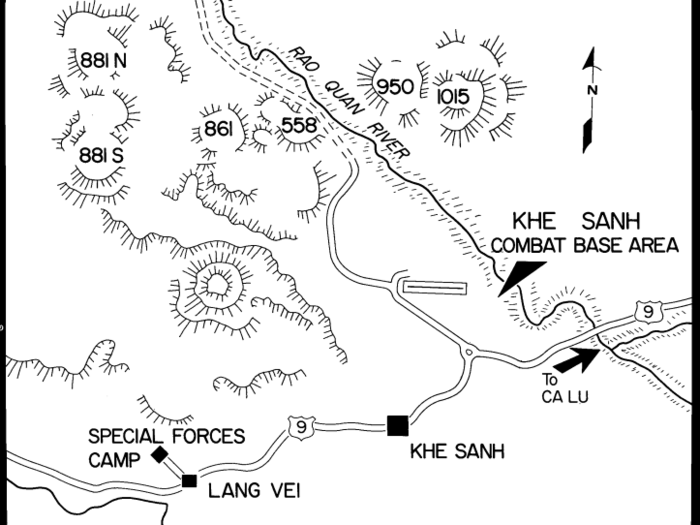
The most intense fighting would take place at the outposts on the hills that guarded the high ground, especially hills 881N/S, 861, 558, and 950.
The hills were named after their height in meters. Route 9 was the only road in this part of Quảng Trị Province that lead to the coast.
President Lyndon Johnson was determined to keep Khe Sanh.
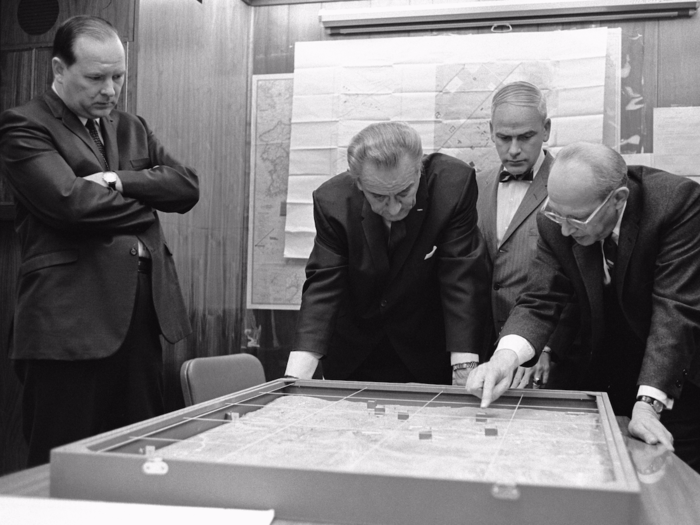
By mid February, Khe Sanh became a symbol of the US' fight against communism in Southeast Asia. Johnson was worried that Khe Sanh would become America's Dien Bien Phu.
As a result, he ordered that Khe Sanh be held at all costs. General Westmoreland would step up the air campaign with B-52 bombers, and move half of the US Army's mobile reserve in Vietnam to the area.
By the end of February, it was clear that the NVA were not going to give up on taking Khe Sanh. As the Marines continued to fight the NVA, elements of battlefield humor began to make appearances, such as this message on a Marines vest.
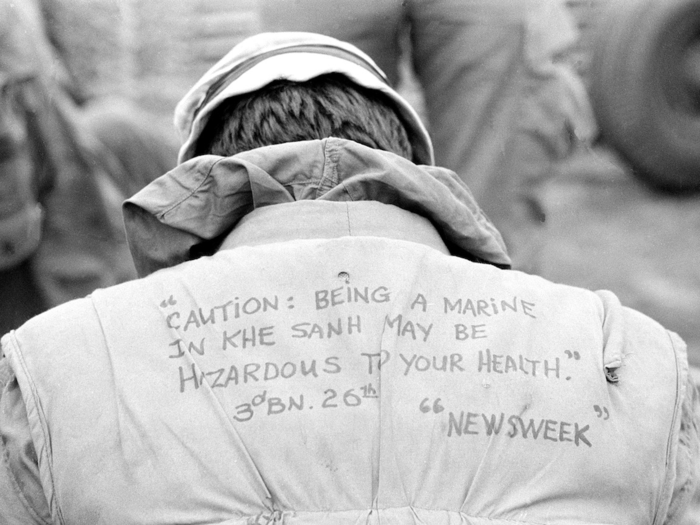
Another example of battlefield humor is seen here.
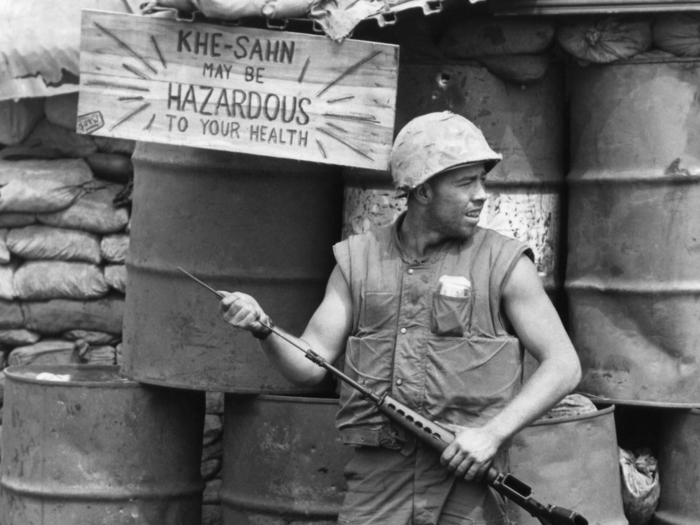
Artillery barrages were sometimes so intense, that helicopter pilots like the one here were forced to wait until they were over before they could take off.
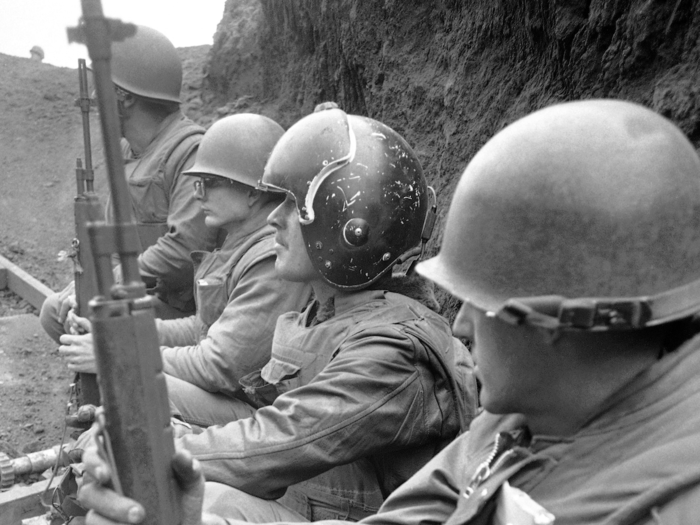
Despite the bombings, the fight continued. American casualties started to mount, and could only be evacuated by air.
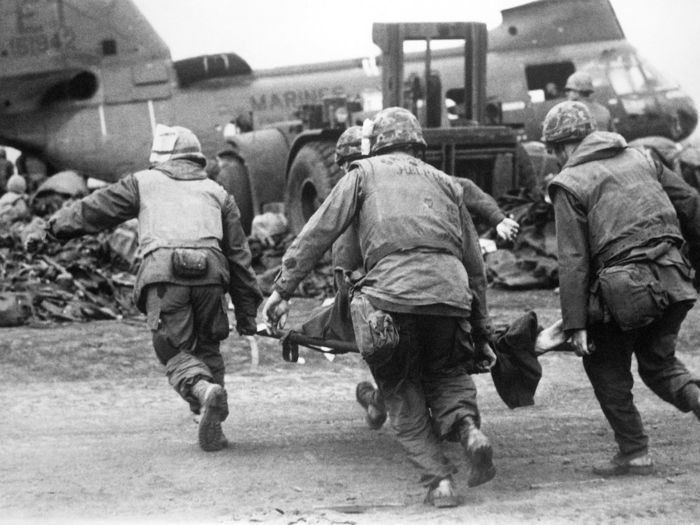
The supplies coming in from the air enabled the artillery at the Khe Sanh Combat Base to keep firing at attacking NVA units who were moving in on the outposts in the Hills.
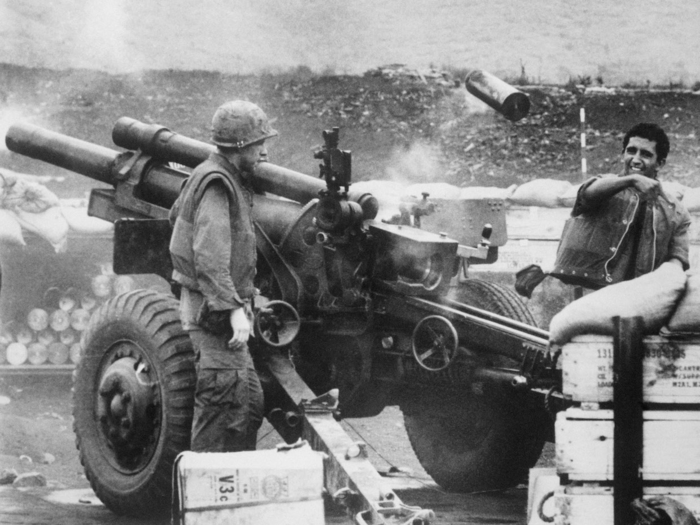
What kept the Marines alive were airstrikes from the Air Force, Marines, and Navy.
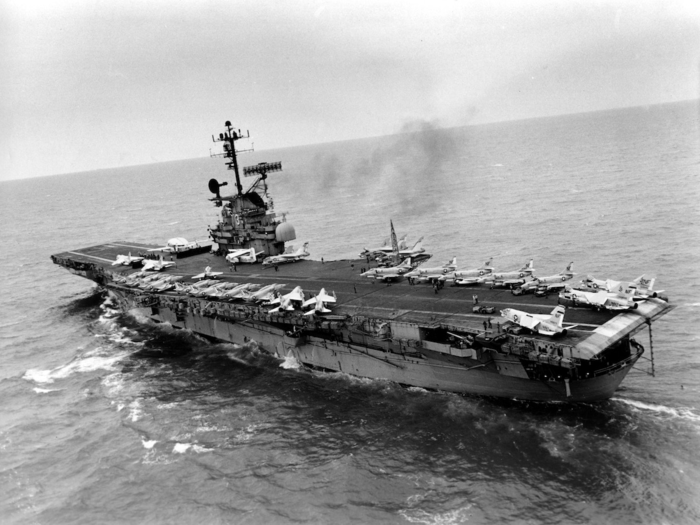
American airstrikes sometimes totalled 600 a day, and were launched from bases in South Vietnam, Thailand, and even aircraft carriers in the Gulf of Tonkin.
"We started pouring it on," General Westmoreland said. "The bombs fell all the month of February and all the month of March."
Resupplying the base by the air was not without its risks.
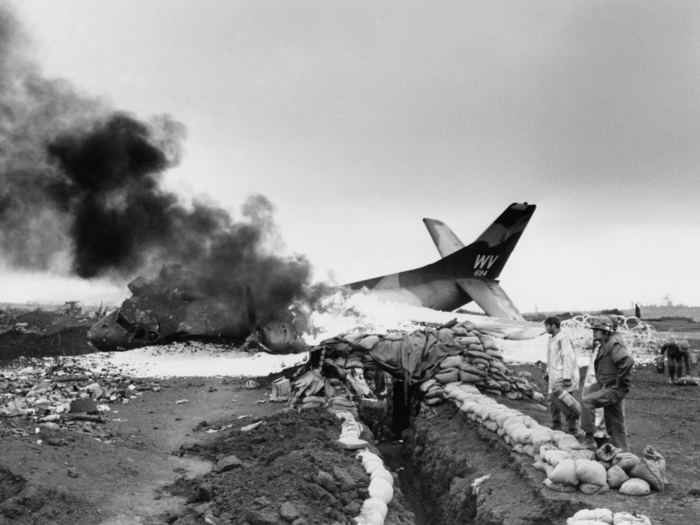
The NVA had placed anti-aircraft guns around Khe Sanh, and continued to shell the airstrip. This resulted in a number of aircraft losses, clogging up the runway, and further complicating evacuation and supply efforts.
Different countermeasures were used, such as the use of white phosphorous to prevent the NVA from seeing what was going on on the airfield.
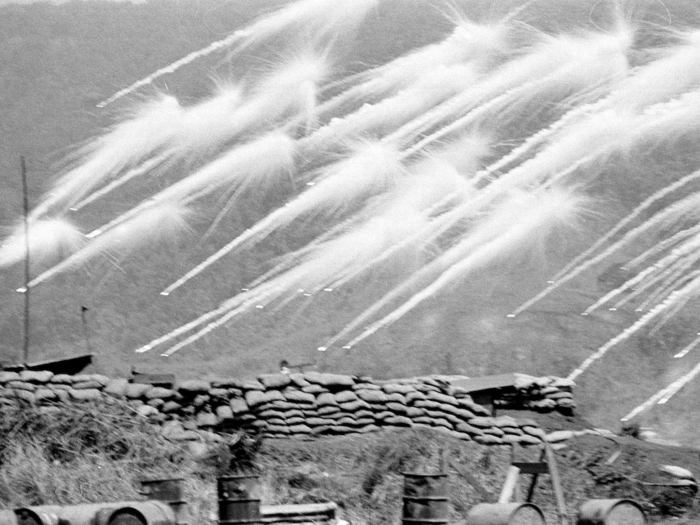
B-52 bombers proved absolutely essential.
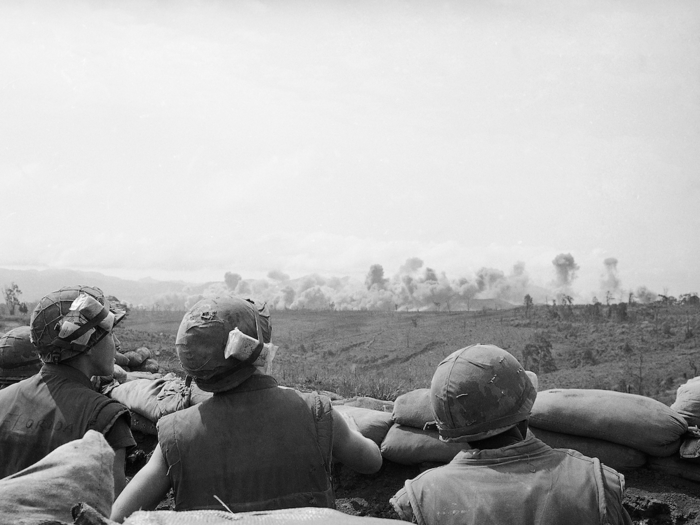
Codenamed Arc Light, B-52s could drop 500 and 750 pound bombs and conduct 50 flights a day. A single B-52 could drop over 100 bombs and destroy an area one mile long and a quarter mile wide. They were also able to conduct strikes at night and in bad weather.
B-52 strikes were so effective that the NVA were never able to properly gather their troops together for the all-out mass assault they had planned on the Combat Base.
Some of the airstrikes were "danger close" meaning they were within 600 meters of the impact point, like this strike here.
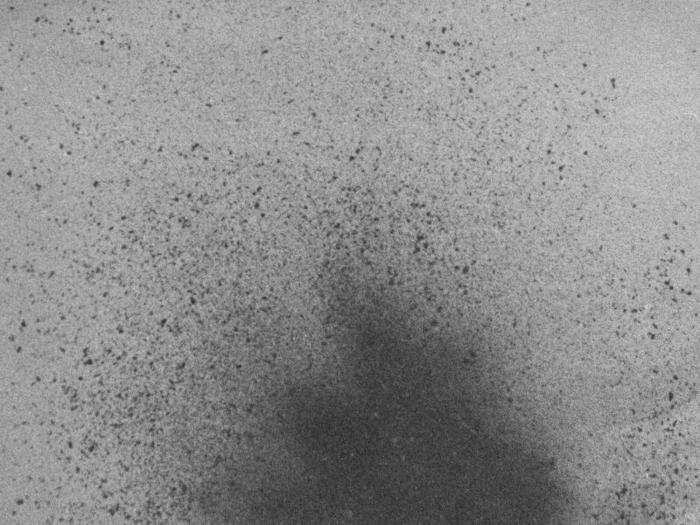
In all, B-52s flew over 2,500 missions on Khe Sanh. Khe Sanh was, in the words of General Westmoreland; "the first time in history where a siege of that magnitude was broken by airpower."
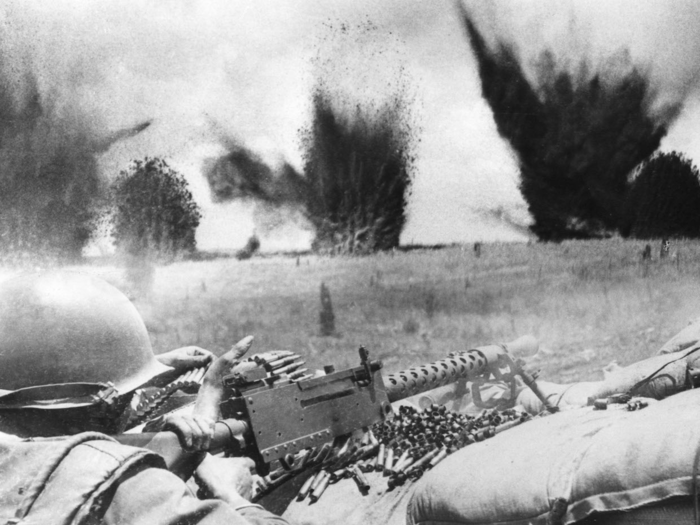
Makeshift medical facilities at the base were mostly underground. Despite this, doctors and medics had to work around the clock wearing helmets and flak jackets, as seen here.
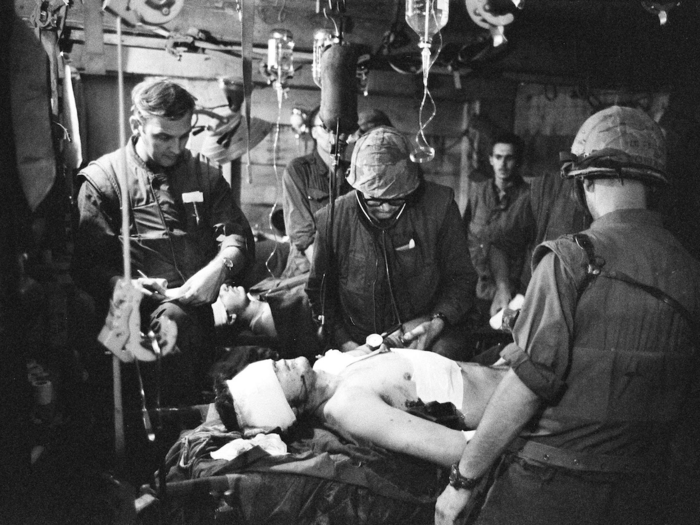
Resupplying the base by air became so dangerous, that aircraft could no longer actually land to deliver their cargo.
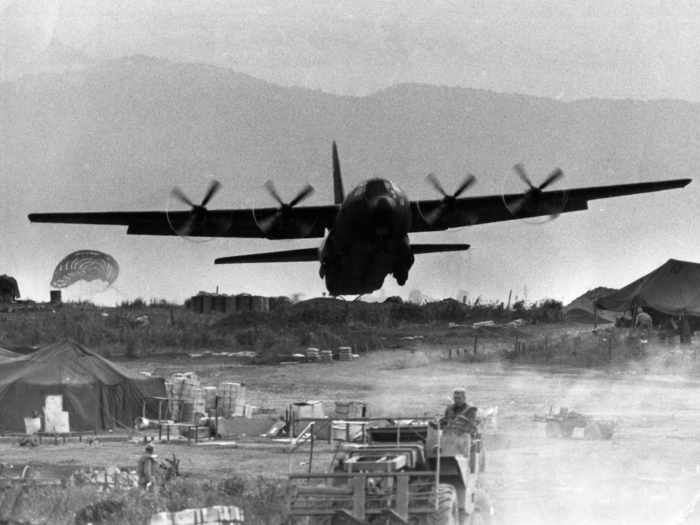
C-130s and C-123s had to do low passes and drop equipment. To drop off reinforcements or evacuate the wounded, the planes had to land but keep moving while personnel would run in and out of the cargo bay.
Eventually, aircraft were forced to drop supplied from the air by parachute, a contingency that had actually been planned for.
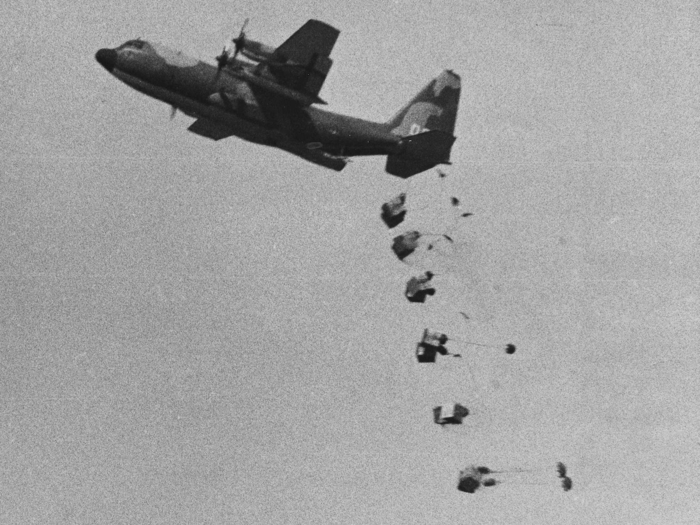
Coupled with the intense airpower and artillery, the fabled marksmanship of the Marines kept the NVA from entering the base itself.
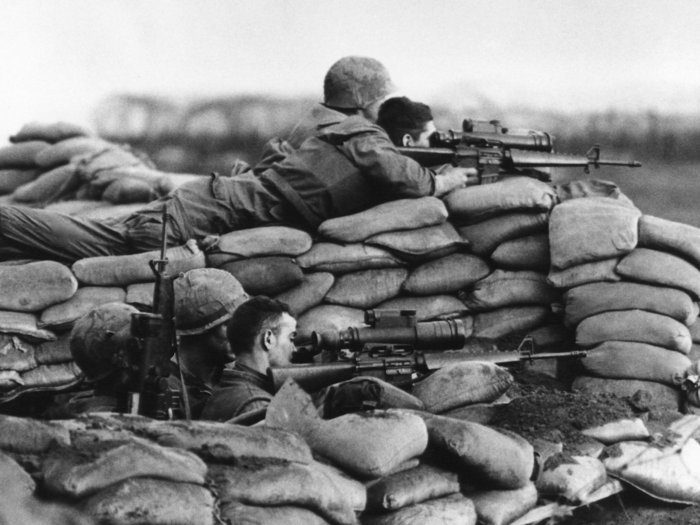
By April, the weather had cleared up and the US Army moved its forces to break the siege.
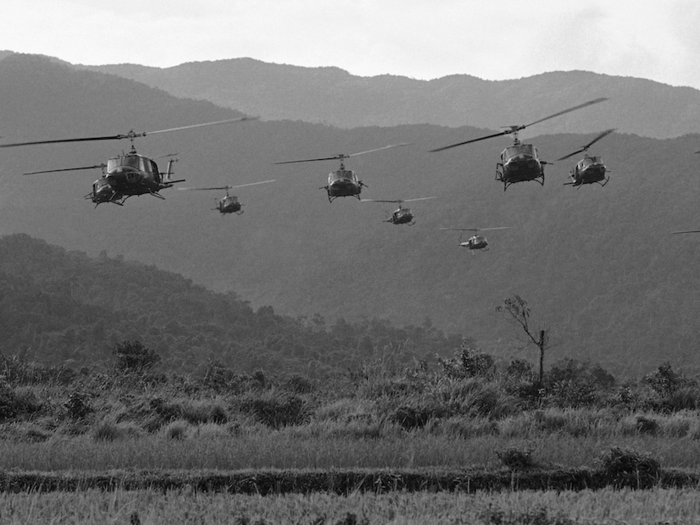
With the monsoon that had hung over Khe Sanh passing, General Westmoreland ordered his men to relieve the siege, starting Operation Pegasus.
The Army's 1st Cavalry Division made up the majority of the relief force. They, along with another detachment of Marines and ARVN soldiers numbered over 30,000 strong, and reopened Route 9.
By April 7th, elements of the relief force finally made it to the Khe Sanh Combat Base. The 1st Cavalry Division, the Marines, and the ARVN now needed to clear out any remaining resistance
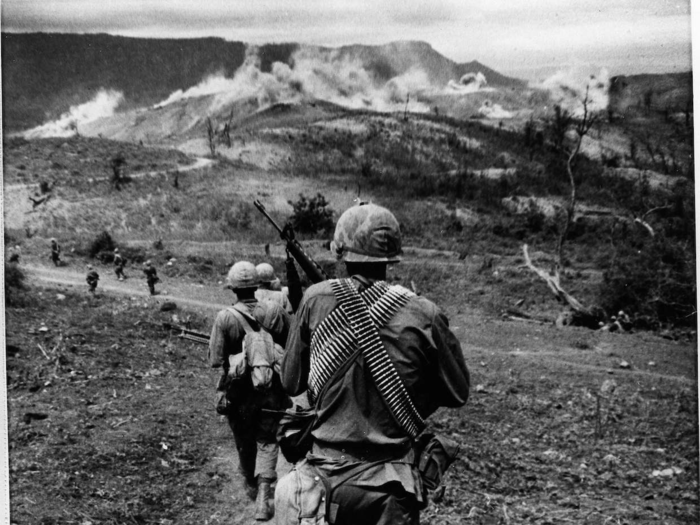
Fighting continued well into June. By early July, the NVA had retreated and the battle was over.
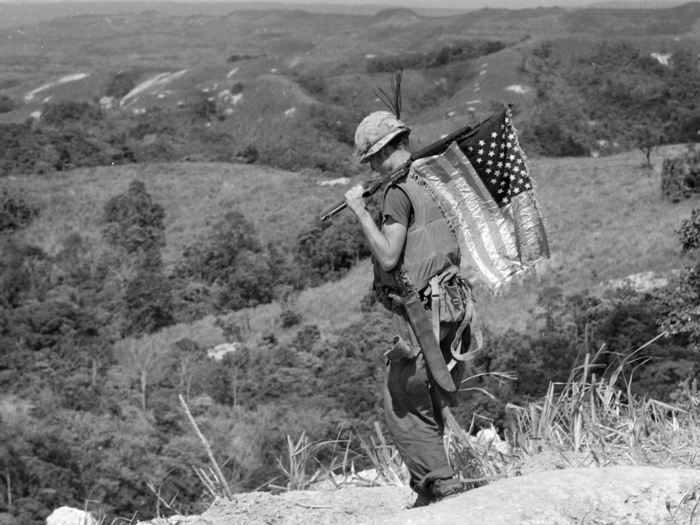
The base was essentially destroyed by the battle. The remaining soldiers were now tasked with guarding the base while the final evacuation was carried out.
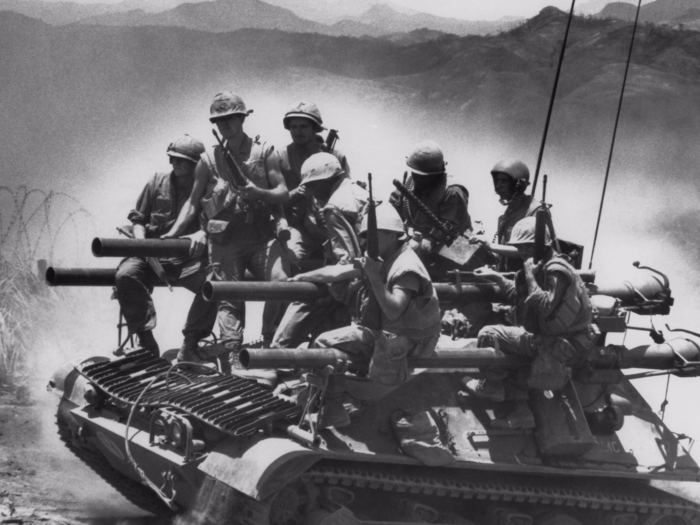
With the base in ruins, the US fully pulled out of Khe Sanh as a result of the battle, as this image taken just two months after the battle shows.
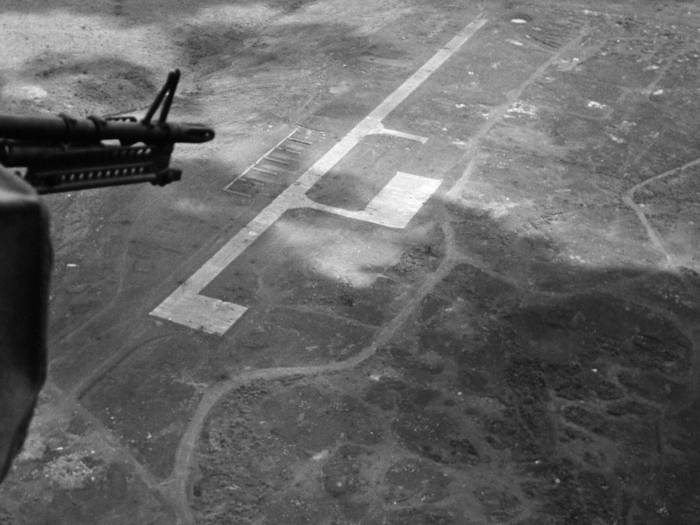
The Khe Sanh Combat Base was completely evacuated. Both sides declared victory, but in reality, not much had changed. The NVA and the US continued to fight each other in the region.
Khe Sanh would prove to to a large diversion. A week after the battle started, the Tet Offensive was launched. The offensive saw the NVA and the Viet Cong start brutal urban battles all across South Vietnam — most notably in Saigon and Hue.
Popular Right Now
Advertisement